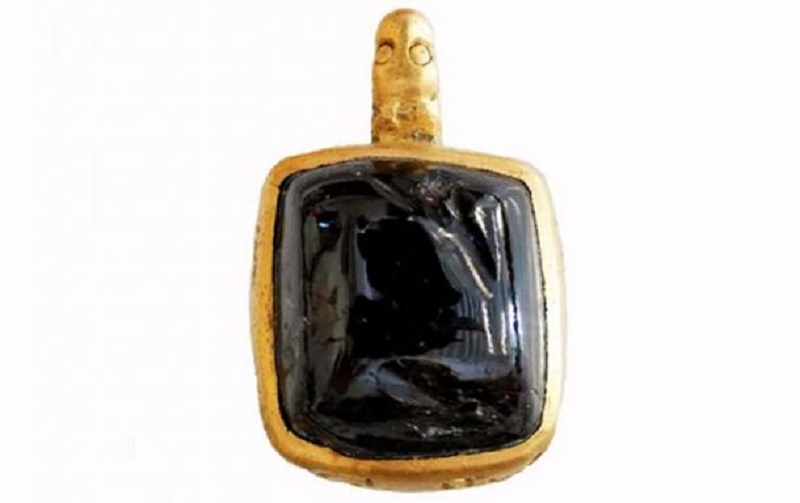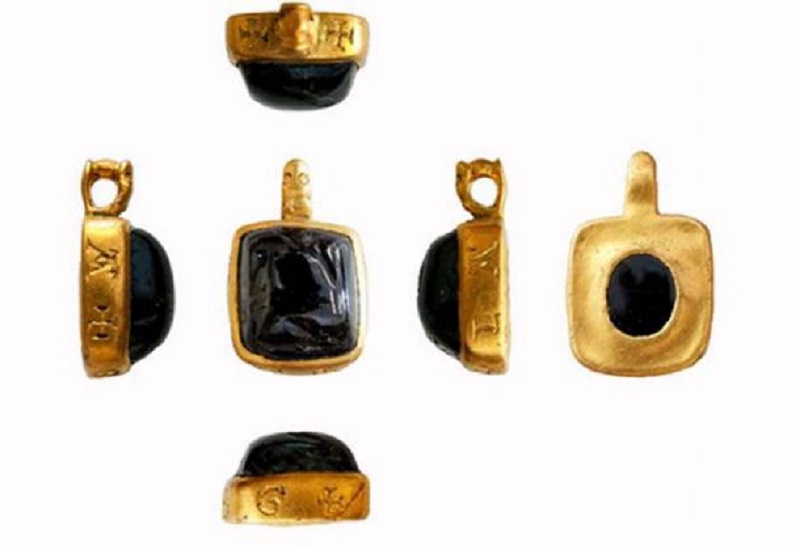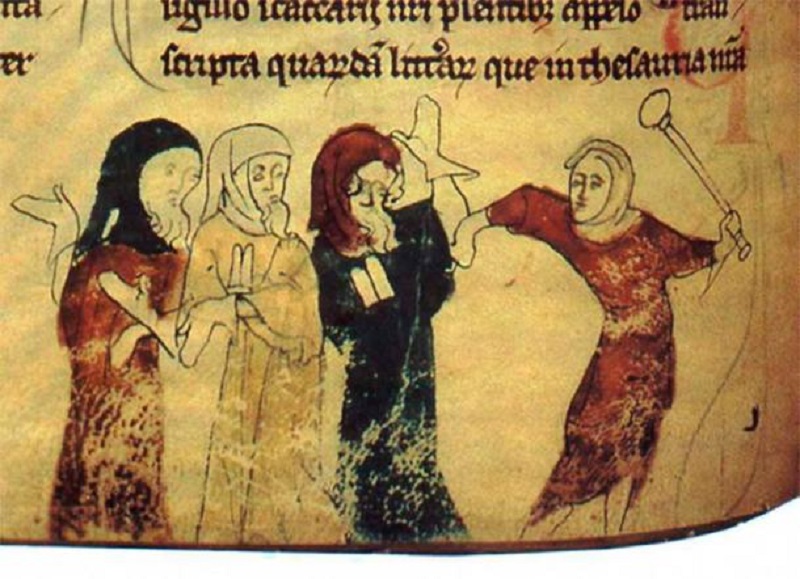A metal detectorist had the good fortune to hit upon an incredible garnet and gold pendant dating to the Middle Ages at Great Tey near Colchester, Essex, in August 2021. The pendant was inscribed with a “magical” phrase in Hebrew invoking the protection of God for the wearer.
Rigorous tests run on the pendant to verify its authenticity and gather more information about it concluded with the late 12th or early 13th century pendant being declared a treasure, reported the BBC. Set in chunky gold, the garnet pendant measuring 10.3 millimeters by 9.1 millimeters by 7.2 millimeters (0.4 inches by 0.3 inches by 0.28 inches) has AGLA printed on the gold mounting.
The acronym AGLA is short for the Hebrew phrase Atha Gebri Leilan Adonai, meaning “thou are mighty forever O Lord.” The golden suspension loop of the pendant has a zoomorphic design in the shape of an indeterminate animal.

he gold pendant discovered at Great Tey measures 10.3 millimeters by 9.1 millimeters by 7.2 millimeters (0.4 inches by 0.3 inches by 0.28 inches). (Surrey County Council)
Hebrew Inscribed on the Pendant Was the Language of Magic and the Devil
Lori Rogerson, the county finds liaison officer, is reported by the BBC as having said that the wearer was “invoking the protection of God in the most magically-powerful language.” Given the valuable nature of the pendant, the wearer obviously belongs to the nobility.
The phrase itself has been found quite widely inscribed on medieval jewelry, Surrey liaison officer Simon Maslin disclosed in his report for the Essex coroner mentioned the article in the BBC. So why was it considered so “magical” that it bestowed strong protection on wearers? Principally because for the medieval English, Hebrew was an ancient language of magic.
“For medieval Christians, Hebrew was the language of magic, being an ancient language originating from a place with a long tradition of magical practice,” explained Rogerson. “So the phrase could be seen as doubly powerful by invoking the protection of God in the most magically-powerful language.”
Additionally, Jews in England, a prosperous community of moneylenders and professionals, were increasingly being viewed with mistrust, and some Christians even associated Hebrew with the Devil. Thus the invocation was meant to confer protection on the wearer from the forces of the underworld.
The gold pendant as photographed from every angle. (Surrey County Council)
Fake News Lead to the Expulsion of the Jews
Jews settled in England only after the 11th-century Norman conquest, on the invitation of William the Conqueror. According to an article on the 13th-century expulsion of Jews from England, published by the University of Oxford Faculty of History, the Jews had become critical to the English economy as they were allowed to lend money on interest, something that was forbidden in Christianity .
In general, the Jewish community in England was made up of skilled professionals, but their most essential role was financing the royals and nobility. Until the reign of Henry II (1152-89), they were largely a protected community. However, in 1290, the entire Jewish community of England, numbering some 3,000 people, was expelled on the orders of Edward I.
There were several reasons feeding into the rising tide of anti-Semitism in England and across Europe. Perhaps, the most potent were false charges of something known as “blood libel,” which implied that Jewish people were abducting and murdering Christian children for magical rituals.
The Church too changed its official stance from tolerance of Jews to hostility, in turn affecting lay attitude. With the Crusades hardening views against the so-called “Christ-killers,” Jews were increasingly under attack in Europe.
It was not until the 1260s and the increasing attempt by kings, especially Henry III (1216-72), to extract money from the Jews as taxes and forced gifts that things came to a head. Under financial pressure, the Jews chose to sell on the debts owed to them. When the new owners of the debt pressed the debtors to pay up, the Jews were blamed.
Many Jews left the country voluntarily, while the remaining were expelled under the Edict of Expulsion of 1290, in return for which a hugely indebted Edward I was awarded a tax of £116,000 – the largest single tax of the Middle Ages – from Parliament.
Miniature showing the expulsion of Jews following the Edict of Expulsion by Edward I of England (18 July 1290). (Public domain)
The Blurry Line Between Magic and Religion
As Rogerson stated when discussing the Essex pendant, “the line between magic and religion were very much blurred” in the Middle Ages. “This may seem surprising since magic and witchcraft tend to be associated with evil,” stressed Rogerson.
However, she clarified that this anti-magic feeling dates back to a later period. The 17th century witchcraft hysteria, “when innocent people were accused of colluding with the devil,” can explain this association between magic, witchcraft and the forces of evil.
Gemstone pendants dating to the medieval period are a very rare find as compared to the very common gemstone finger rings. Gemstones in themselves, whether set in a ring or as a pendant, were thought to provide protection to the wearer. This was because “as a creation of God, they were considered to be natural talismans due to their brilliant color and purity.”
The Colchester Museum is hoping to make the jewel a part of its collection.
Top image: The supposedly “magical” gold pendant was discovered at Great Tey near Colchester. Source: Surrey County Council




